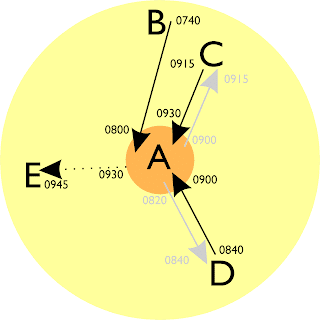Scheduling Rural DRT

Rural DRT schemes often see vehicles covering a large geographical area, and scheduling vehicles to carry as many passengers as possible is a challenging task. Scheme designers face a stark choice: A simple booking process, where the user calls and is given an instant decision on whether they can be carried. This is simple for the provider and for the user, but seriously inefficient. OR A more efficient system, where the schedule is built only when the provider can see the requirements of all users at once. The snag is that this is much more complicated for the user. What's wrong with simple scheduling? The problem with a simple, instant-booking, system is that your schedule is built up as the requests come in at the start of the booking period. This causes two problems: You will end up with wasted time , from gaps that are too short to allow extra trips. If the first booking that you take sees your bus arrive in town A at 10.00, and the next caller wants to leave A...